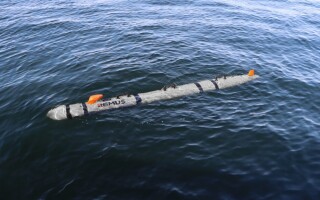GUEST BLOG: From evangelism to mandate: the rise of MOSA
BlogSeptember 07, 2023

For many COTS [commercial off-the-shelf] vendors and VITA members, the Tri-Service Memo issued in January 2019 by the secretaries of the Army, Navy, and Air Force was the highest validation of several decades of their combined efforts.
The memorandum clearly stated that, going forward, modular open systems approach (MOSA)-supporting standards “should be included in all requirements, programming and development activities for future weapon system modifications and new start development programs to the maximum extent possible.”
Examples of MOSA standards include the Sensor Open Systems Architecture (SOSA) and CMOSS, both of which rely on OpenVPX hardware as their foundation.
For those individuals and companies who have worked together over the decades to further the activities of VITA and the VSO, this historic milestone can arguably be viewed as the point at which their collective efforts finally transitioned from evangelism to Department of Defense (DoD) mandate.
After years of working together to champion the performance, reliability, and cost benefits of COTS electronics, and the power of open architectures, that argument has emerged victorious.
What’s more, it’s been codified into law. While the DoD has employed MOSA to varying degrees for nearly two decades, its use was formally made law and mandated by Congress in the National Defense Authorization Act for Fiscal Year 2017 (Public Law 114 – 328). Section 805 of the Act (“Modular Open System Approach in Development of Major Weapon Systems”) states that approved major defense-acquisition programs “shall be designed and developed, to the maximum extent practicable, with a modular open system approach to enable incremental development and enhance competition, innovation, and interoperability.”
In 1994, then-Secretary of Defense William J. Perry launched the COTS Initiative that enabled military use of commercial electronics.
In his memo, “A New Way of Doing Business,” Secretary Perry wrote: “Moving to greater use of performance and commercial specifications and standards is one of the most important actions that DoD must take to ensure we are able to meet our military, economic, and policy objectives in the future.”
Since then, VITA has led the way, establishing an environment and ecosystem to ensure the success of the COTS Initiative. A case can easily be made that VITA is the most successful consortium effort that industry has yet seen, and provides the best model for bringing together industry, government, customers, and academia in a way that enables business rivals to work together towards the same goals, for the benefit of national security and to establish a healthy technical and economic ecosystem.
The VITA consortium model, which we now see effectively embraced by groups such as the Open Group’s FACE [Future Airborne Capability Environment] and SOSA consortia, has continually provided the best example for bringing together the widest mix of stakeholders to build true community and drive the development of essential open standards.
But this is not a time for resting on laurels. VITA and the standards defined by the VSO are living entities that are built to evolve as technology moves forward and new challenges drive the need for new innovative capabilities.
The consortium approach and the open standards ethos are built for flexibility and to adapt quickly to emerging requirements.
The shift from evangelism to mandate for MOSA is just the beginning and VITA provides a solid foundation on which to continue to architect the future of embedded computing.
Ivan Straznicky is CTO, Curtiss-Wright Defense Solutions.
Curtiss-Wright Defense Solutions www.curtisswrightds.com







